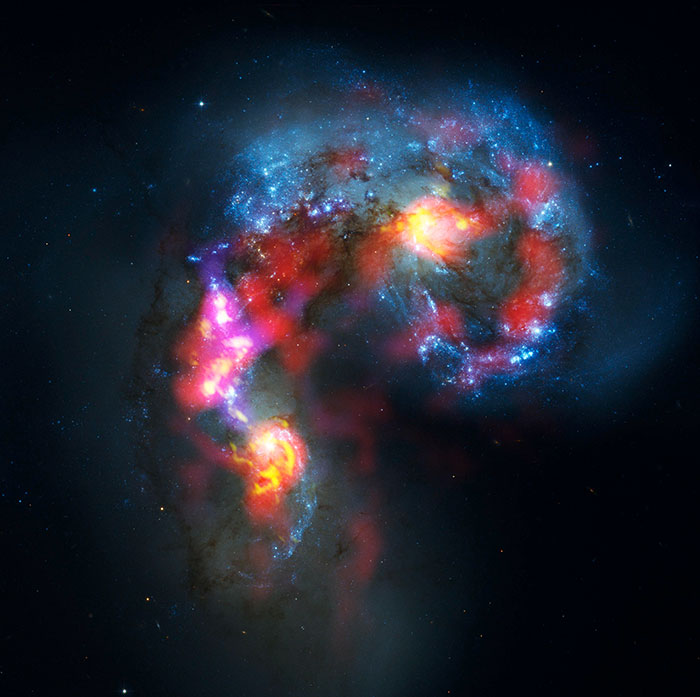Galactic Collision Depicted by Multi-Wavelength Observations
Astrophotography・

| Telescope | the Atacama Large Millimeter/submillimeter Array, the Hubble Space Telescope |
|---|---|
| Wavelengths | 2.6 mm, 0.87 mm (ALMA), 814 nm, 550 nm, 435 nm (Hubble) |
| Camera | ALMA Band 3 & Band 7 Receivers; Hubble ACS |
| Credit | ALMA (ESO/NAOJ/NRAO); Visible Light Image: the NASA/ESA Hubble Space Telescope |
This image of the Antennae Galaxies combines data from ALMA (the Atacama Large Millimeter/submillimeter Array) and the Hubble Space Telescope. This is understood to be a case where two galaxies have just collided. The distributions of carbon-monoxide molecules found by ALMA’s observations are depicted in red and yellow. This shows that molecular gas is collecting in the core of each galaxy and in the region of overlap between the galaxies (left of center in the image.)
If you look closely at the image, you can see that the Hubble visible light image shows few stars in the areas where ALMA observed strong radio emissions. This shows that ALMA observed radio waves from the interstellar medium, which blocks the stars’ light. Additionally, within the ALMA observations, the parts shown in yellow have higher temperatures and densities than the parts shown in red. In particular, in the region of overlap between the galaxies, the interstellar medium that was contained in both galaxies is colliding and compressing, causing active star formation. ALMA drew a clear diagram of the distribution of the materials for these stars.
(Author: Masaaki Hiramatsu, NAOJ Chile Observatory)